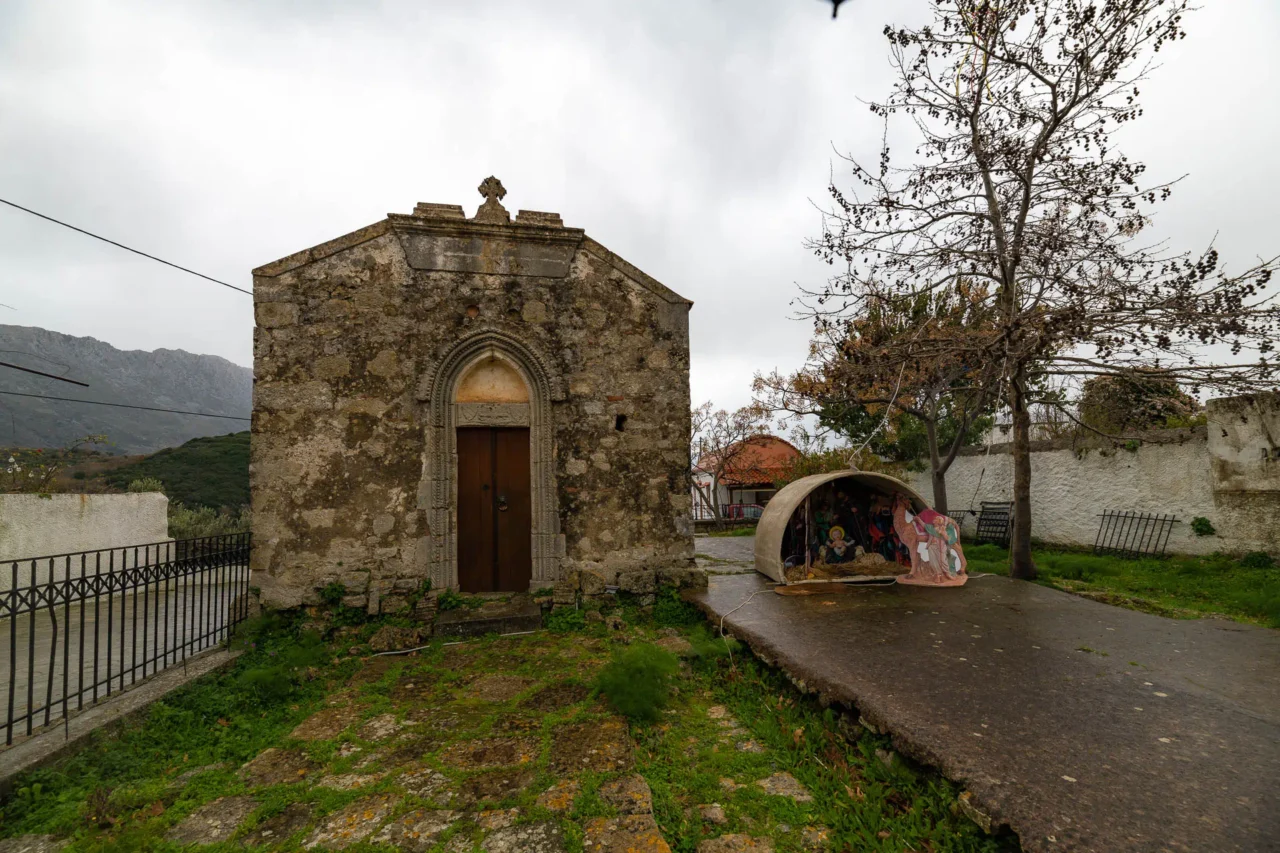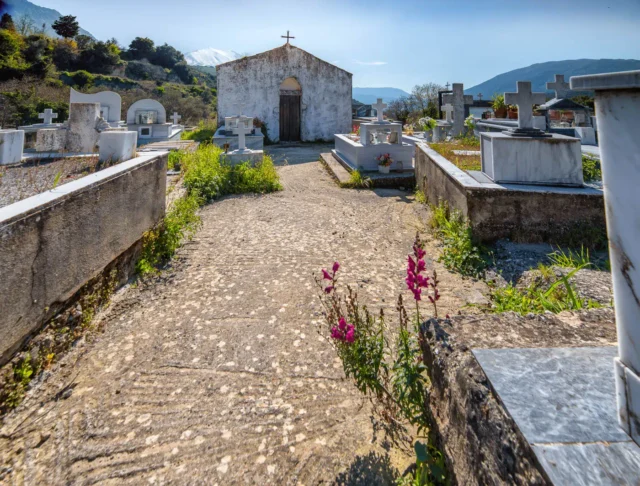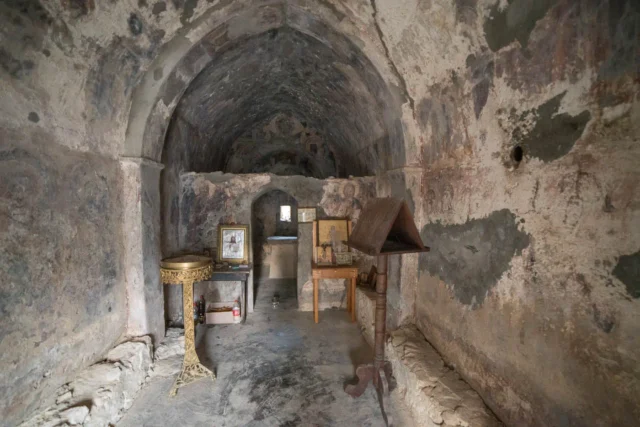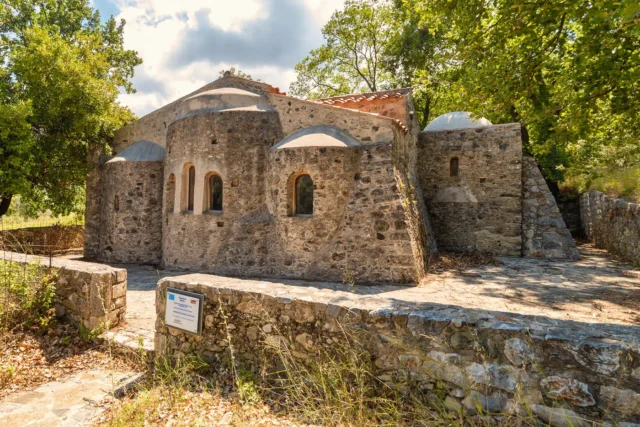


The church of Panagia, or the Church of the Dormition of the Theotokos, in the village of Thronos, is a significant religious and historical landmark in Crete. Located in the Amari region, this single-nave Byzantine church dates back to approximately 1300 AD. It was constructed atop the ruins of an older, three-aisled Early Christian basilica from the 5th-6th century, remnants of which, such as mosaic floors, can still be seen in the surrounding area.
A striking feature of the church is the presence of the Kallergis family coat of arms, a testament to their patronage and influence in the region during the late Byzantine period. The interior walls of the church are adorned with well-preserved frescoes from the 14th-15th centuries, offering a glimpse into the artistic and religious expressions of the era. Notably, the frescoes in the nave and the sanctuary exhibit distinct styles, suggesting the involvement of different artists or workshops.
The church’s historical significance is further underscored by its location on the hill of Kephala, the site of the ancient city of Syvritos. This strategic position allowed for control over access to important centers in the south, such as Phaistos and Gortyna, from both the north coast and the neighboring city of Eleutherna. The village of Thronos itself has a long history, dating back to the Late Minoan period, and flourished during the Roman era. In the Byzantine period, it became the seat of the Bishopric of Syvritos, adding to its religious and political importance.
Construction Period: Around 1300 AD
Location: Thronos village, Amari region, Crete
Historical Significance: Built on the ruins of an Early Christian basilica, showcases Byzantine frescoes, and features the Kallergis family coat of arms.
Current Status: Active church, open to visitors.







































There are no comments yet.